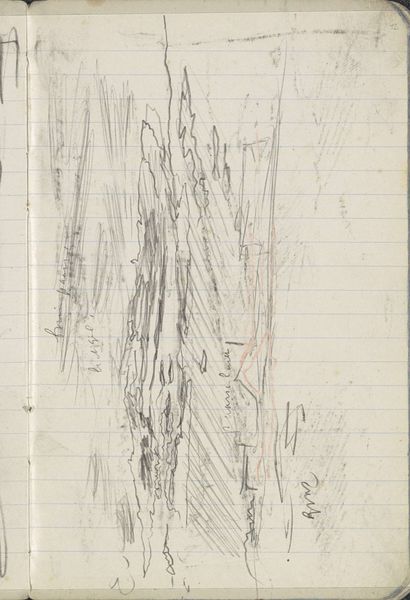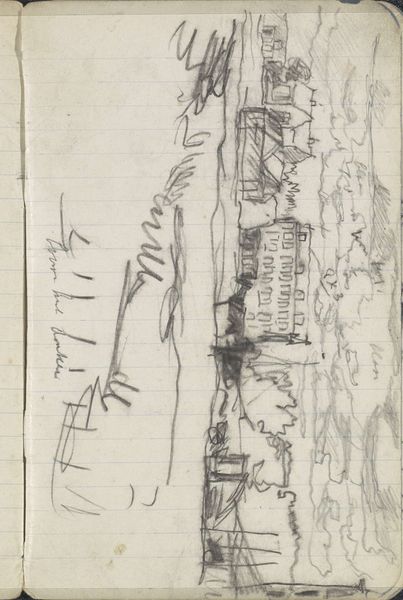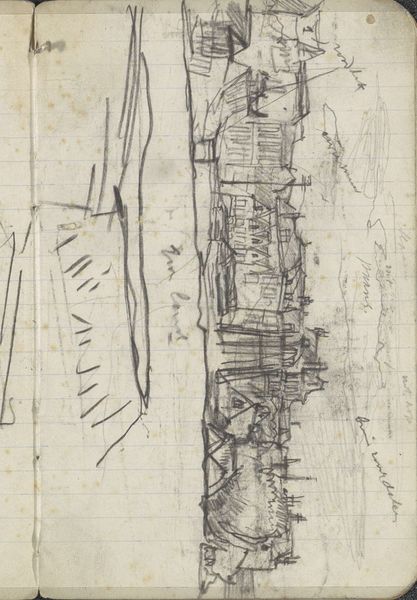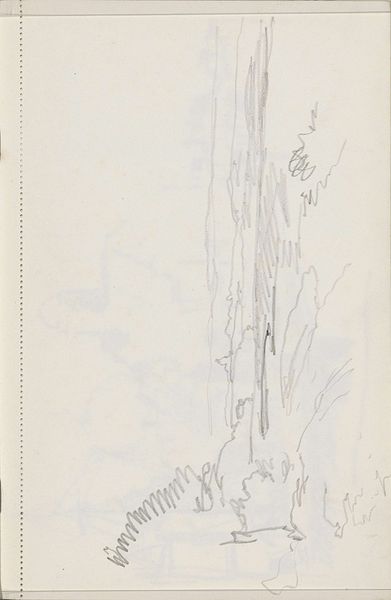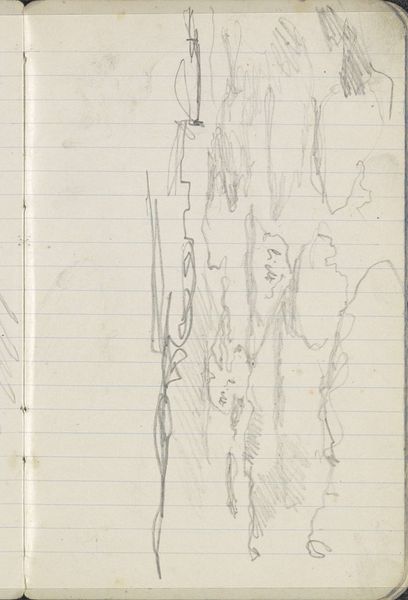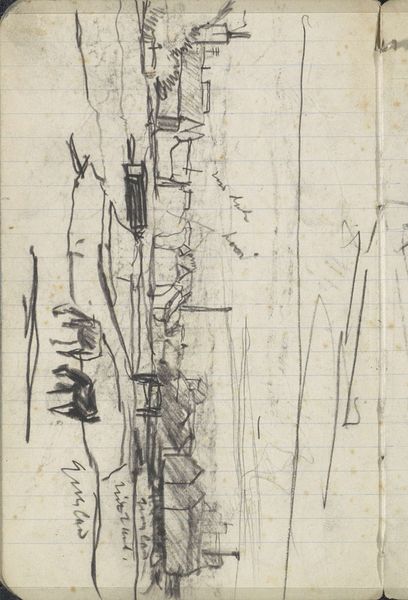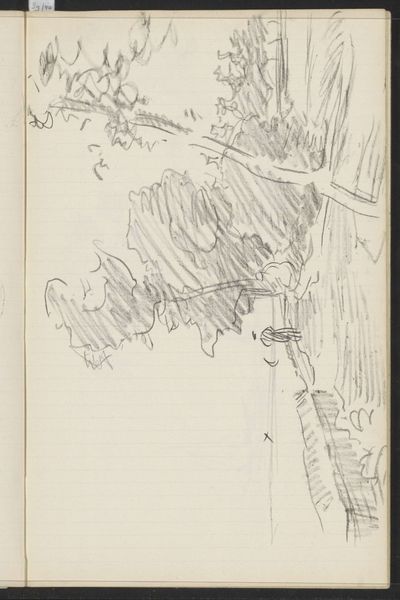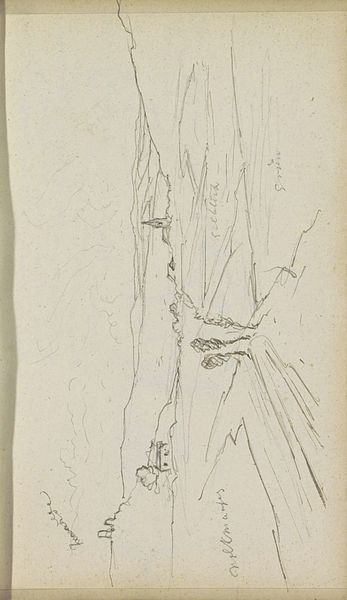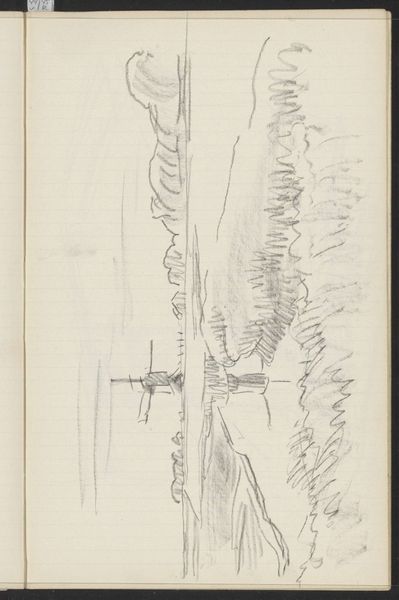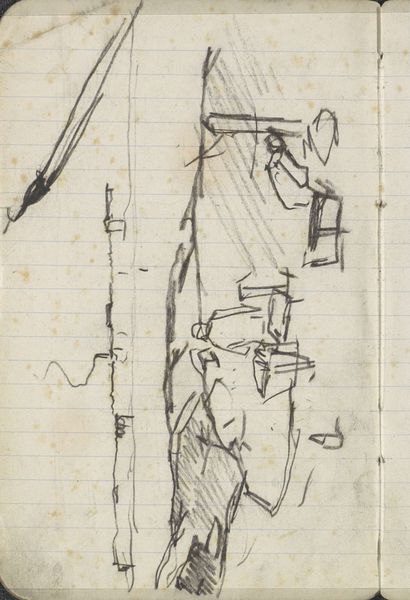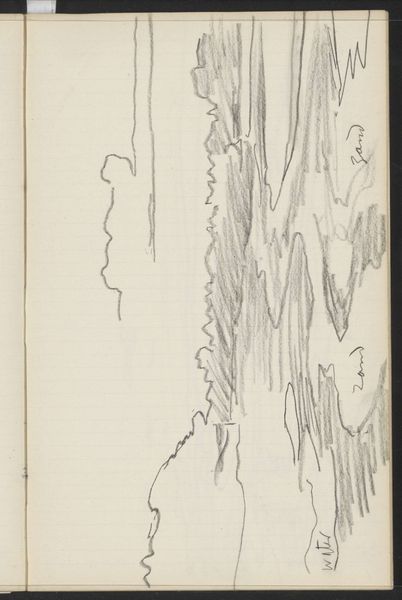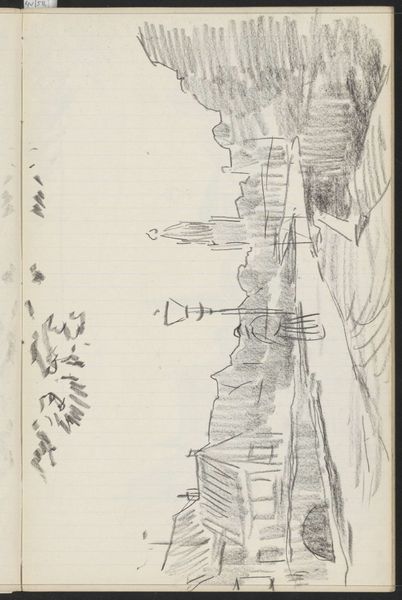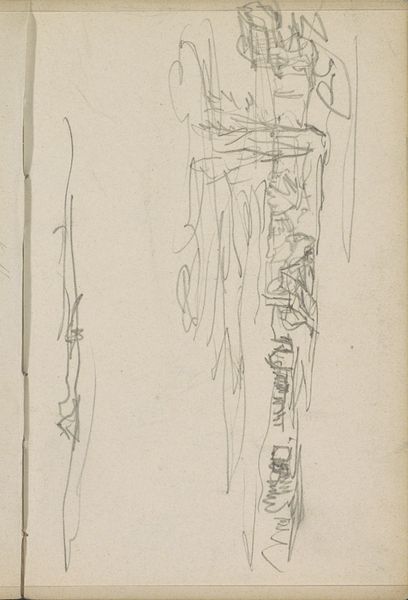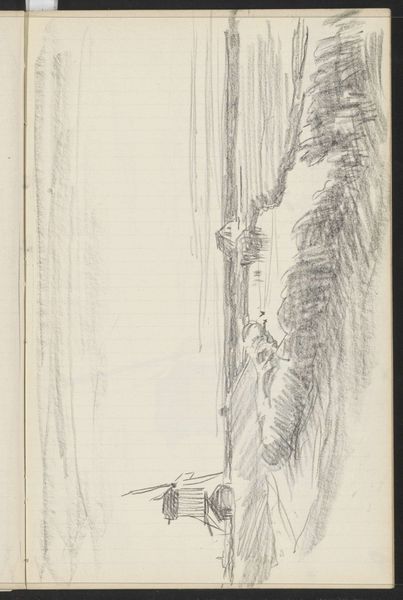
Copyright: Rijks Museum: Open Domain
Editor: We’re looking at George Hendrik Breitner's "Landschap met wolkenlucht," a pencil drawing on paper from 1896-1897. The sketchiness gives it an unfinished feel, and makes me think of how ephemeral nature is, ever changing. What do you see in this piece? Curator: It’s a powerful image when we consider the social context of landscape art at the time. Breitner was working amidst rapid urbanization, and industrialization, transforming the Dutch landscape. Do you see how this sketch, in its very "unfinishedness," hints at the precarity of nature itself? Editor: That's a compelling point! So, you're suggesting it's not just a study of clouds, but a comment on broader societal shifts? Curator: Exactly! The loose, almost frantic lines, particularly when contrasted to Golden Age landscape paintings, could reflect anxiety about the vanishing rural spaces. What do you make of his choice to focus on the sky, rather than a traditional panoramic view? Editor: It almost feels like he's looking for something… a sense of hope, maybe? Or maybe the clouds represent the shifting moods of the era? Curator: Precisely. The "wolkenlucht"—cloudscape—becomes a space for projecting those anxieties and fleeting moments of hope. Think about how, for marginalized communities at the time, access to unspoiled nature was already limited. Whose landscapes were truly being 'lost,' and whose experiences were privileged in artistic representations of nature? Editor: I never considered the idea of access to nature as a privilege during that time, it gives another level of meaning to Breitner’s drawing. Thank you. Curator: It’s in examining those perspectives that the full impact of art history resonates.
Comments
No comments
Be the first to comment and join the conversation on the ultimate creative platform.
